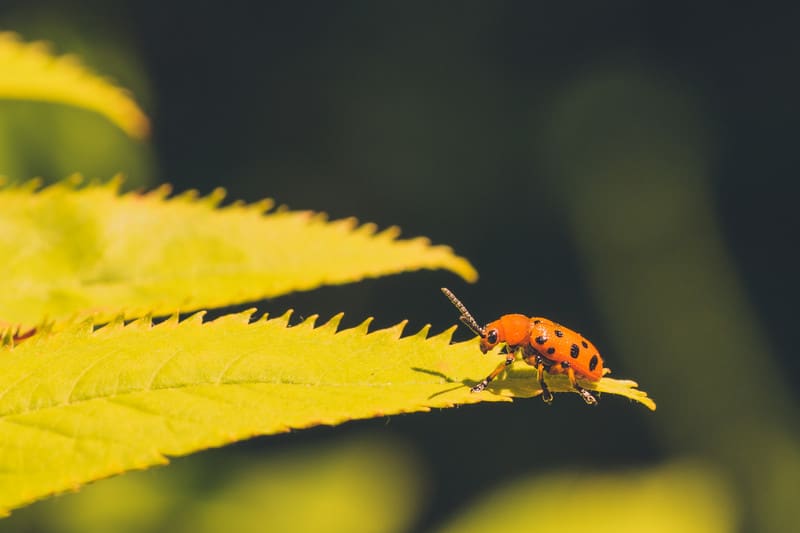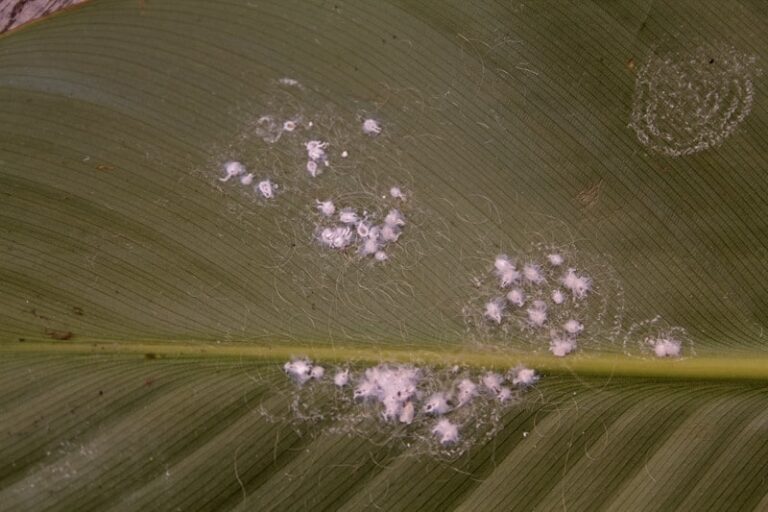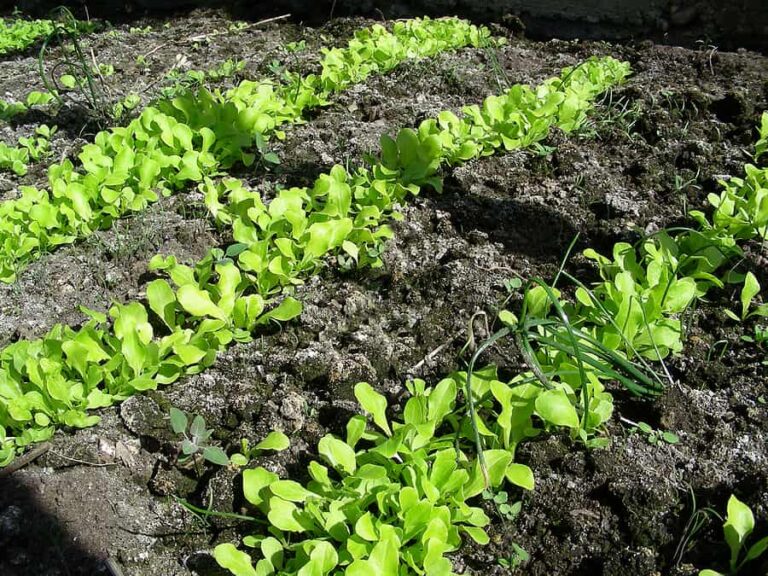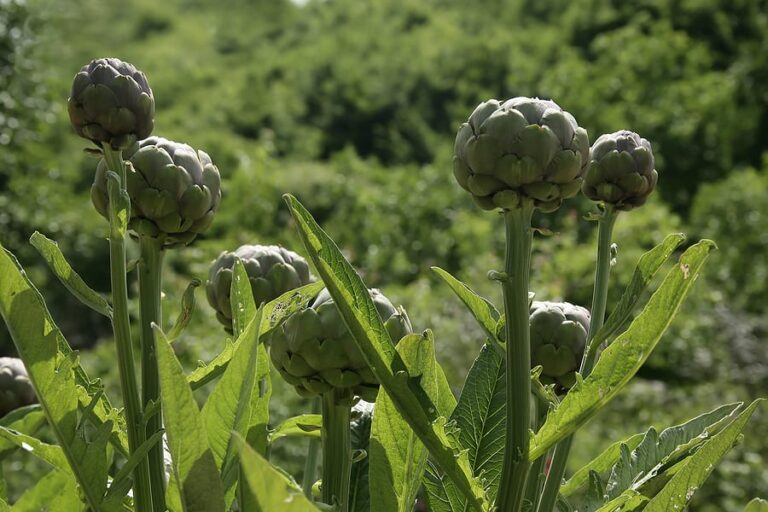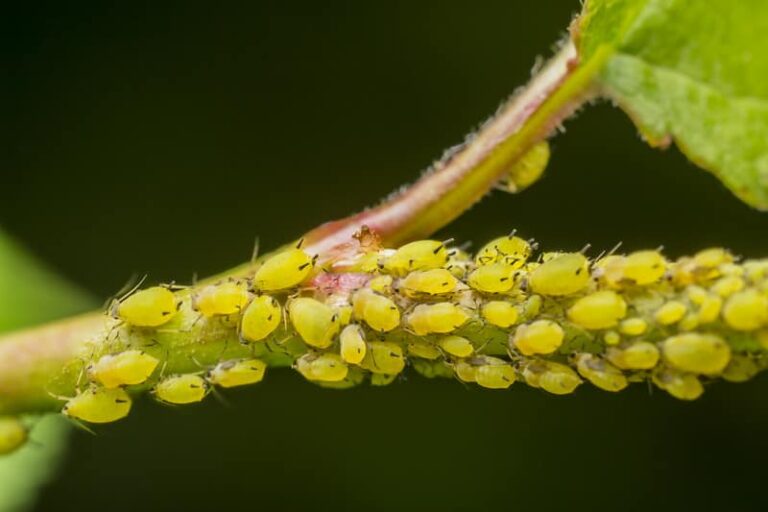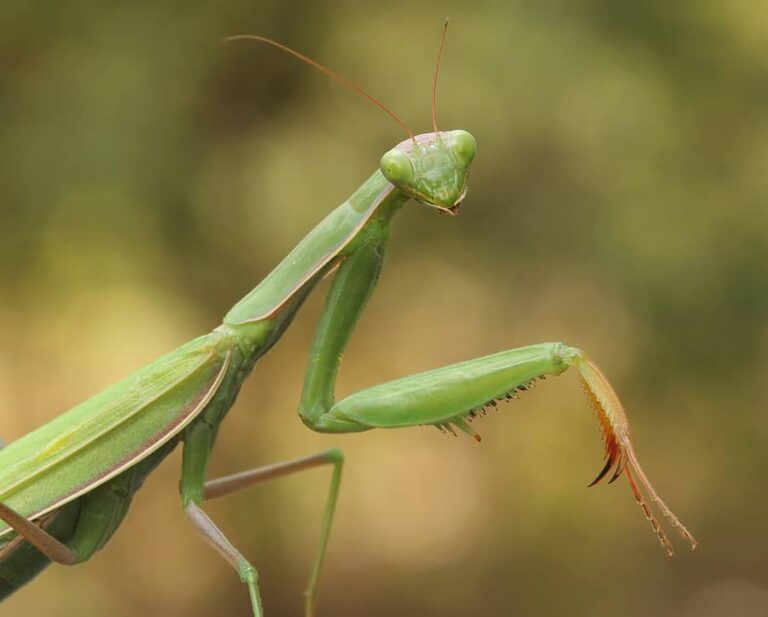Asparagus Beetle Organic Pest Control
The common asparagus beetle adult is a shiny, elongated blue-black beetle with a reddish-brown thorax and four cream-colored spots surrounded by a red border on the wing covers. The adult asparagus beetle is ¼-inch long.
The larva is a greenish-gray, wrinkled, humpbacked grub with a dark head about ⅓-inch long.
Common asparagus beetle adults and larvae strip the needle-like leaves off asparagus plant fronds inhibiting the plant’s ability to photosynthesize and store energy for the production of spears. The beetles and larvae also chew asparagus spears.

There is a second species of asparagus beetle—the spotted asparagus beetle—which has 12 black spots on the wing covers. Adult spotted asparagus beetles also feed on leaves and spears, but the larvae do not. This species is less destructive than the common asparagus beetle because only the adults feed on asparagus plants.
Adult asparagus beetles hibernate in the soil and garden litter near plants during the winter then emerge about the time asparagus spears are about 6 inches tall—about harvest time. The adults feed and then lay eggs on the spears.
Asparagus beetle eggs are shiny and black and are found attached by one end to asparagus spears. They hatch in about one week. The larvae feed for about two weeks on spears then burrow into the soil and pupate. A new generation of adults appears about ten days later.
There are usually two or three generations of asparagus beetles each year.
The common asparagus beetle is found throughout North America. The spotted asparagus beetle is commonly found east of the Mississippi River.
Scientific Name: Criceris asparagi (common asparagus beetle); Crioceris duodecimpunctata (spotted asparagus beetle).
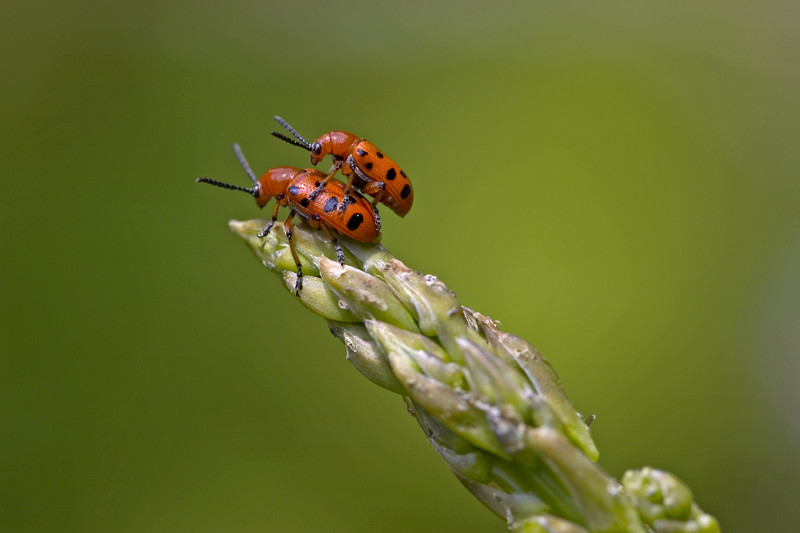
Target plants
Asparagus
Feeding habits and damage
Adults and larvae chew on green asparagus shoots leaving them blemished with black stains and misshapen. Beetles also attack older stems and leaves. They can defoliate plants.
Organic controls
Wash eggs, larvae, and beetles off plants with a strong stream of water. Handpick beetles and crush them. As a last resort spray beetles with pyrethrin.
Organic control calendar
Here is what you can do seasonally to control asparagus beetles:
- When spears emerge in spring: Spray new spears with seaweed extract which seems to repel asparagus beetles. Cover new spears with poly-row covers to exclude beetles. Plant an intercrop of calendulas, nasturtiums, or tomatoes which also seem to repel beetles.
- While spears are developing and after harvest, as ferns grow on Knock beetles, larvae, and eggs from spears and plants with a strong stream of water. Handpicking can set back the population significantly. For serious infestations, apply pyrethrum; spray the entire plant; use two applications three to four days apart. Alternatively, dust plants with 5 percent rotenone, repeating every 3 to 5 days up to 24 hours before harvest.
- After harvest: In the fall, cut off the drying fronds an inch above the soil and remove any overgrown weeds. Clean up garden debris. Cultivate the soil 2 inches deep around the plants. After a week or two, lay a 4- to 6-inch layer of straw around the plants. In early spring, about two weeks before spears are expected, remove the mulch and cultivate the first one to two inches of soil again. Leave the soil bare during harvest and then mulch for summer.
Natural predators
Asparagus beetles are attacked by ladybugs and parasitic and predatory flies. Animal predators include chickens and ducks which can be let loose to feed in the asparagus patch before spears emerge. Songbirds that feed on asparagus beetles include Baltimore orioles, bluebirds, cardinals, and chickadees.
Asparagus Growing Hub
Start here: The Ultimate Asparagus Growing Guide: From Seed to Harvest
Planting & Establishment
- How to Grow Asparagus from Seed vs. Crowns: Which Is Best?
- When to Plant Asparagus by USDA Zone
- How to Plant Asparagus
- How to Select the Best Asparagus Plants and Crowns
- Starting Asparagus from Seed Indoors: Step-by-Step Guide
- Direct Sowing Asparagus Seeds Outdoors
- Planting Asparagus Crowns Outdoors: A Beginner’s Guide
- Male vs. Female Asparagus Plants: What’s the Difference?
- How to Transplant Asparagus Without Damaging the Roots
Care & Maintenance
- The Best Companion Plants for Asparagus and What to Avoid
- How to Water Asparagus for Healthy Growth
- Fertilizing Asparagus: Feeding Tips for Bigger Harvests
- Seasonal Asparagus Care: Spring, Summer, and Fall Tasks
- How to Blanch Asparagus for White Spears
- How to Protect Asparagus from Winter Cold
Pests & Diseases
Harvest & Storage
- When and How to Start Harvesting Asparagus Spears
- How to Harvest and Store Asparagus
- Asparagus Harvest Schedule: Year-by-Year Guide
- How to Harvest Asparagus Twice a Year
Kitchen & Varieties
- Seven Ways to Cook and Serve Asparagus
- How to Cook Asparagus with No Recipe
- Canning the Asparagus Harvest
- Top Asparagus Varieties to Grow in Your Garden
Asparagus articles at Harvest to Table:
How to Harvest and Store Asparagus
Seven Ways to Cook and Serve Asparagus
How to Cook Asparagus with No Recipe
Asparagus Growing Problems Troubleshooting
Asparagus Beetle Organic Pest Control
Related articles:
Vegetable Garden Diseases Problem Solver
Vegetable Garden Organic Weed Control
Vegetable Garden Organic Pest Control
Garden Planning Books at Amazon:
- Vegetable Garden Almanac & Planner
- Kitchen Garden Grower’s Guide Vegetable Encyclopedia
- Vegetable Garden Grower’s Guide
- Tomato Grower’s Answer Book
Garden Planning Books at Amazon:

